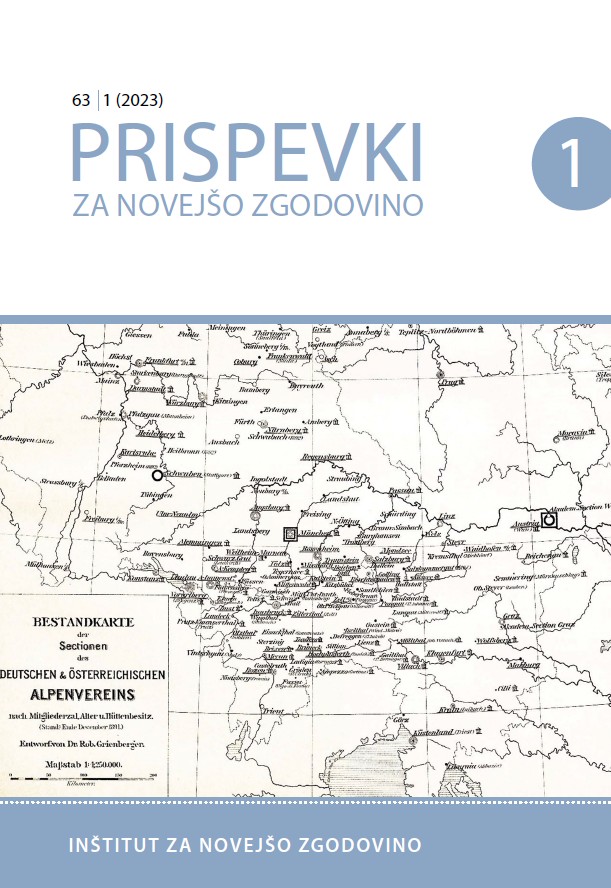The Passing of Stalin Is Not the End, or the Unstoppable Integration of the Socialist Market
DOI:
https://doi.org/10.51663/pnz.63.1.08Keywords:
USSR, Czechoslovakia, Cold War, CMEA, COMECON, Antonín Novotný, Khrushchev, Economic cooperation, Scientific-technical cooperationAbstract
This article deals with the development of economic cooperation in the socialist market between 1953 and 1968 from the perspective of the Czechoslovak economy. The period of Antonin Novotny at the helm of the Czechoslovak Communist Party has so far been a controversial one, as it has been characterized by both the efforts to reform Stalinist anachronisms and the initially low capacity to sustainably root these reforms in the fragile frozen ground of Cold War-era soil. The question is whether the gradually unfolding Khrushchev Thaw that accelerated its onset from the second half of the 1950s onwards made it possible to plant certain reforms and reap their fruits in the longer term. It is also necessary to raise the question of the nature of the key actors and obstacles in the process of reforming intra-bloc cooperation. In particular, the archives of the Czechoslovak industrial ministries located in Prague were consulted to research these issues.
References
Bauer, Tamás. “Success and Failure: Emergence of Economic Reforms in Czechoslovakia and Hungary.” In The Evolution of Economic Systems, edited by Kurt Dopfer, and Karl-F. Raible, 245–55. London: Palgrave Macmillan, 1990.
Bergson, Abram. “The Geometry of Comecon Trade.” European Economic Review 14, no. 3 (1980): 291–306. https://doi.org/10.1016/s0014-2921(80)80002-x.
Bogomolov, O. “Economic Cooperation among the Comecon Countries.” EasternEuropean Economics 2, no. 4 (1964): 3–10. https://doi.org/10.1080/00128775.1964.11647864.
Budinský, Libor. Deset prezidentů. Prague: Knižní klub, 2008.
Butler, W. E. (ed.). International Law and the International System. Dordrecht, Boston, Lancaster: Martinus Nijhoff Publishers, 1987.
Dobson, Alan P. “From Instrumental to Expressive: The Changing Goals of the U.S. Cold War Strategic Embargo.” Journal of Cold War Studies 12, no. 1 (2010): 98–119. https://doi.org/10.1162/jcws.2010.12.1.98.
Ernst, Miloslav. Czechoslovakia and International Economic Cooperation. Prague: Orbis, 1987.
Fusfeld, Daniel R., Stanfield, J. Ron, Howard Sherman, and Brazelton, W. Robert. 1978. “The Third Way.” Journal of Economic Issues 12, no. 3 (1987): 697–708. https://doi.org/10.1080/00213624.1978.11503561.
Golan, Galia. The Czechoslovak Reform Movement: Communism in Crisis 1962–1968. Cambridge: Cambridge University Press, 1971.
Hoffmann, Emil. COMECON: Der gemeinsame Markt in Osteuropa. Opladen: C. W. Leske, 1961.
Horský, J. “The Structure of Czechoslovak Foreign Trade and Prospects of Modifying It.” Soviet and Eastern European Foreign Trade 6, no. 3/4 (1970): 268–83.
Jackson, Ian. The Economic Cold War: America, Britain and East-West Trade, 1948–63 (Cold War History Series). New York: Palgrave, 2001.
Jirka, Jindřich, and Jaroslav Volný. Československé strojírenství doma i za hranicemi. Prague, 1959.
Kaplan, Karel. Československo v letech 1953–1966. Prague: SPN, 1992.
Kaplan, Karel. Československo v RVHP 1949–1956. Prague: ÚSD AV ČR, 1995
Kaplan, Karel. Rada vzájemné hospodářské pomoci a Československo, 1957–1967. Karolinum Press. 2002.
Kashapov, Timur. “Andropov’s ‘Perestroika’ and Soviet-Czechoslovak Relations in 1982–1984.” West Bohemian Historical Review 1, no. 2 (2011): 169–99.
Korbonski, Adrzej. Comecon. International Conciliation no. 549. New York: Carnegie Endowment for International Peace, 1964.
Korbonski, Andrzej. “Theory and Practice of Regional Integration: The Case of Comecon.” International Organization 24, no. 4 (1970): 942–77. https://doi.org/10.1017/s0020818300017574.
Metcalf, Lee K. “The Impact of Foreign Trade on the Czechoslovak Economic Reforms of the 1960s.” Europe-Asia Studies 45, no. 6 (1993): 1071–90.
Michal, Jan M. “Czechoslovakia’s Foreign Trade.” Slavic Review 27, no. 2 (1968): 212–29. https://doi.org/10.2307/2493711.
Montias, J. M. Uniformity and Diversity in the East European Future. Yale University, 1964.
Palous, Jaroslav. “Czechoslovak Foreign Trade Pattern Development.” Czechoslovak Foreign Trade 5 (1965).
Pelzman, Joseph. “Trade Creation and Trade Diversion in the Council of Mutual Economic Assistance 1954–70.” The American Economic Review 67, no. 4 (1977).
Procházka, Jaromír. Poválečné Československo 1945–1989. Prague: Karolinum, 1991.
Procházka, Zdeněk. Hospodářská válka USA proti Československu. Prague: Vojenská politická akademie, 1960.
Průcha, Václav. Hospodářské a sociální dějiny Československa 1918–1992: 2. díl. Období 1945–1992. Brno: Doplněk, 2009.
Radisch, Erik. “The Struggle of the Soviet Conception of Comecon, 1953–1957.” Comparativ – Zeitschrift für Globalgeschichte und vergleichende Gesellschaftsforschung 27, no. 5/6 (2017): 26-47.
Richmond, Yale. Cultural Exchange & the Cold War. Penn State University Press, 2003.
Statistická ročenka ČSSR 1960-1966. Prague: SNTL, 1960–1966.
UN Statistical Office. UN Statistical Yearbook 1948. New York: UN, 1948.
Published
Issue
Section
License
Authors who publish with this journal agree to the following terms:
- Authors retain copyright and grant the journal right of first publication with the work simultaneously licensed under a Creative Commons Attribution License that allows others to share the work with an acknowledgement of the work's authorship and initial publication in this journal.
- Authors are able to enter into separate, additional contractual arrangements for the non-exclusive distribution of the journal's published version of the work (e.g., post it to an institutional repository or publish it in a book), with an acknowledgement of its initial publication in this journal.
- Authors are permitted and encouraged to post their work online (e.g., in institutional repositories or on their website) prior to and during the submission process, as it can lead to productive exchanges, as well as earlier and greater citation of published work (See The Effect of Open Access).


